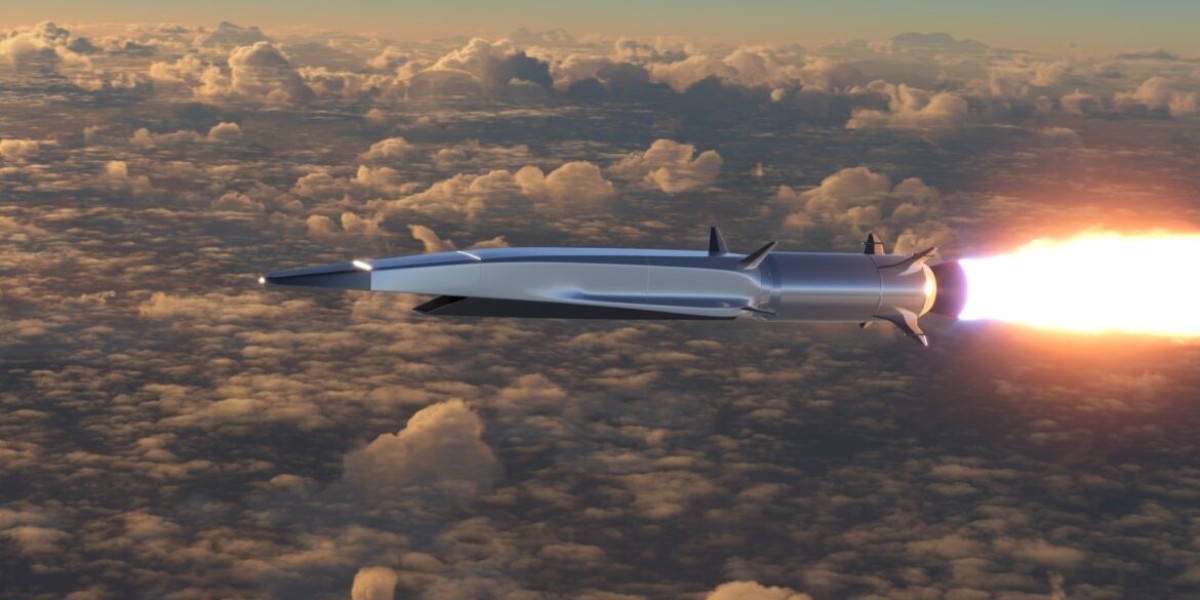The newly developed material resisted temperatures up to 7,343 degrees Fahrenheit without melting or losing shape during tests when applied to encase the surface of a waverider aircraft
China’s scientists have claimed a major breakthrough: a successful test of a new surface material for hypersonic jets, which was considered impossible to make earlier.
The development means that the Asian powerhouse has surpassed far ahead of the United States in the hypersonic race, according to a report by the South China Morning Post (SCMP) on Monday.
“The test flight ended in a complete success,” the scientists said in a peer-reviewed article published in the journal Physics of Gases last month without disclosing full details.
Advancement of the new thermal tech could aid in the creation of reusable hypersonic vehicles with “longer range and faster speed, and constantly break through the boundary of flying,” stated the team lead, Ai Bangcheng, deputy director of the China Academy of Aerospace Aerodynamics in Beijing.
The newly developed material resisted temperatures up to 7,343 degrees Fahrenheit (4,000 degrees Celsius) without melting or losing shape during tests when applied to encase the surface of a waverider aircraft.
This could enable China to manufacture hypersonic aircraft that travel longer and faster, signaling a turning point in the battle for hypersonic technology with America, especially when the US is still grappling with the thermal issues with its hypersonic tech.
US-China hypersonic battle
Hypersonic weapons, compared to conventional ballistic missiles, reach speeds greater than five times the speed of sound, and both the US and China have made big bets on it.
China’s heavy investment in hypersonic tech also helped make significant progress, considering that the People’s Liberation Army (PLA) executed more hypersonic test flights in 2021 than the US did in the last 10 years.
PLA’s program is focused on the development of two types of machines: hypersonic missiles designed to deploy conventional or nuclear warheads and hypersonic aircraft suitable for reconnaissance, strike, or transport operations.
The need for speed has moved to the next stage, bringing “enormous challenges and opportunities,” Bangcheng and PLA’s other military researchers note in the paper.
Meanwhile, the main hurdle that US hypersonic makers face is thermal damage, as per a study by the US Congressional Budget Office to lawmakers in January.
“The fundamental remaining challenge includes managing the extreme heat that hypersonic missiles are exposed to by traveling at high speeds in the atmosphere for most of their flight,” noted the study.
“Shielding hypersonic missiles’ sensitive electronics, understanding how various materials perform, and predicting aerodynamics at sustained temperatures as high as 3,000 degrees Fahrenheit (1,650 degrees Celsius) require extensive flight testing. Tests are ongoing, but failures in recent years have delayed progress.”
China: Crossing the thermal barrier – Stage 2
Interesting Engineering (IE) reported earlier on how Chinese military researchers allegedly made a big advancement in improving the effectiveness of air-breathing engines that utilize solid-state fuel for hypersonic flight.
Last year, Chinese researchers claimed to have created the “world’s first” hypersonic detonation wave engine, which can propel a jet at Mach 9, nine times the speed of sound, using inexpensive jet fuel.
The country’s military possesses a huge arsenal of hypersonic weapons, some of which are meant to strike long-distance moving targets like an aircraft carrier – with higher precision and maneuverability.
“The old concept of thermal barrier mainly referred to the high-temperature conditions encountered by a vehicle when flying at high speeds,” the Chinese military scientists noted in the paper.
“The main concern and challenge was the problem of heat protection at high temperatures.”
According to the researchers, long-range reusable vehicles with both military and civilian use in the final goal of the second stage of the hypersonic boom, which goes beyond just missiles.
Military use of hypersonic aircraft includes rapid deployment, strikes, intercepting stealth operations, and reconnaissance. The Bangcheng group believes a fresh approach to heat management is needed.
The team is building a high-tech platform designed to withstand extreme temperatures while flying over 3,000 seconds in conditions as high as 3,000 degrees Fahrenheit (1,650 degrees Celsius).
The operational method, a secret so far, involves techniques like surface polishing, adding special materials, redesigning structure, and use of heat for propulsion, noted the SCMP report.
All these facilities are available in the West’s laboratory, including the US. But China’s methods have reached a technological readiness level (TRLs) of up to 8, a step closer to field deployment.
Link : sourcelink







